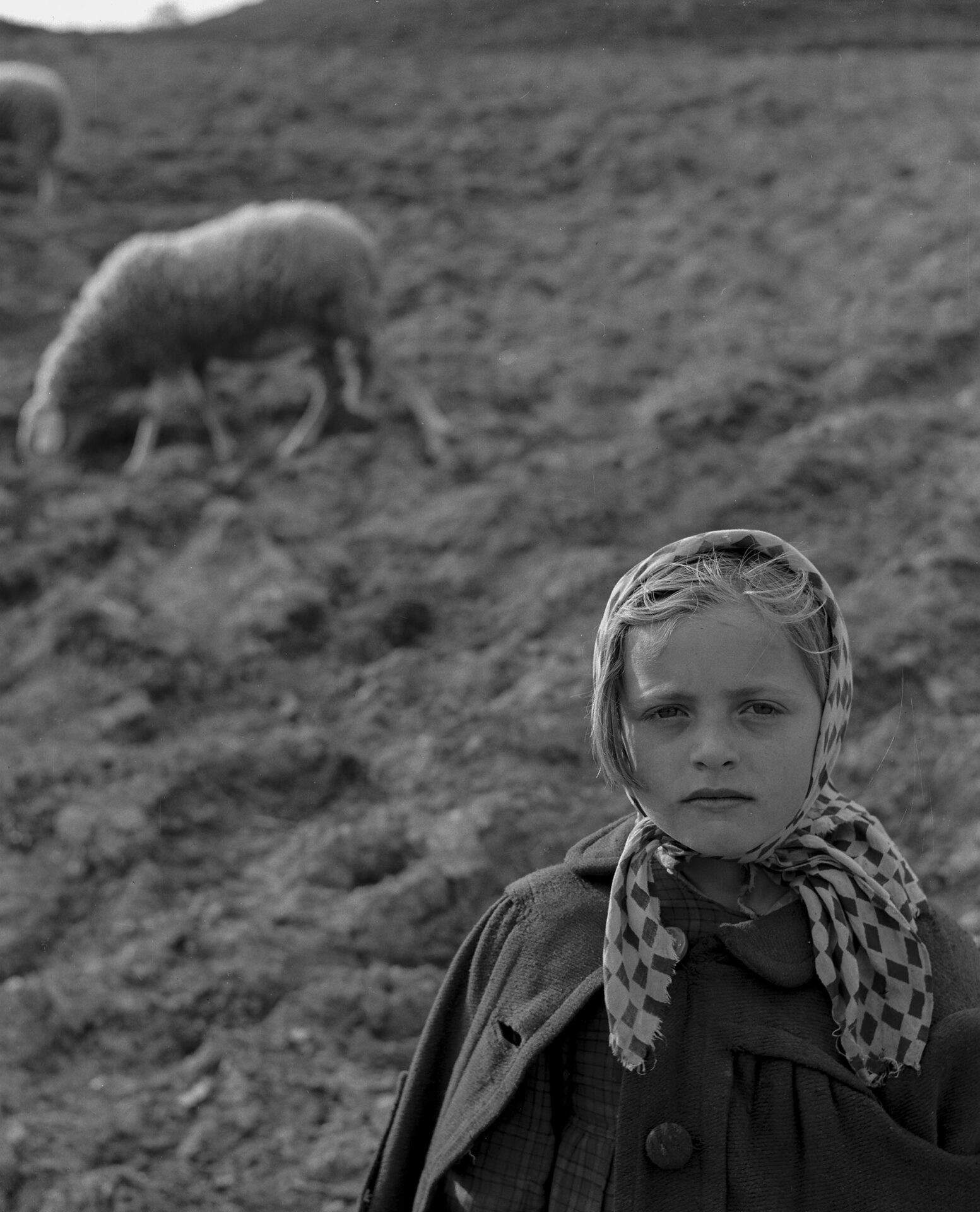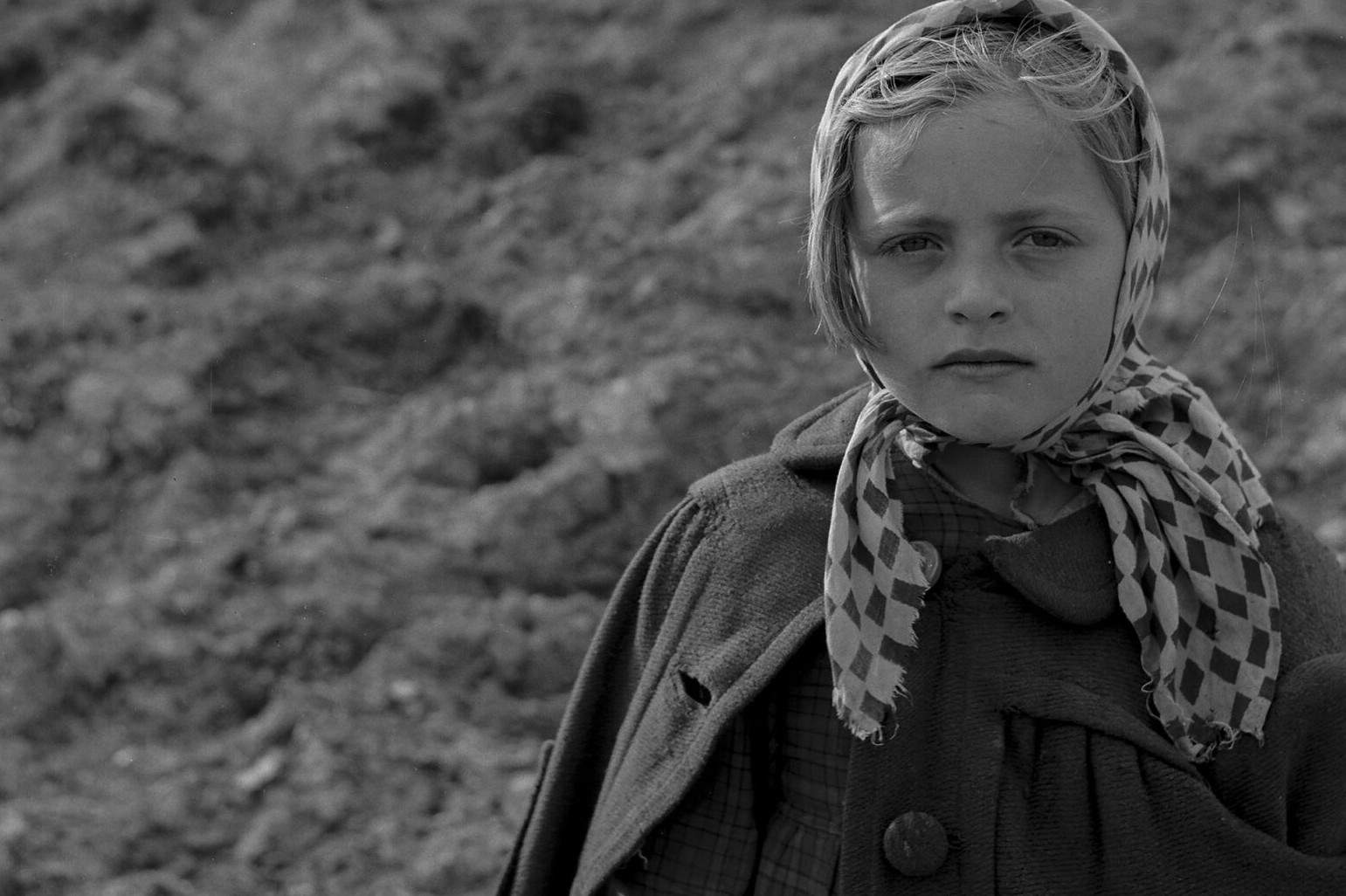The National Gallery of Umbria inaugurates a new space for photography with an exhibition on Fulvio Roiter
Until October 13, 2024, the National Gallery of Umbria in Perugia is hosting the exhibition Umbria, a Love Story. Fulvio Roiter, curated by Alessandra Mauro. The exhibition inaugurates the project Camera Oscura. The National Gallery of Umbria for Photography, curated by Marina Bon Valsassina and Costanza Neve: a space dedicated to photography, set up within the exhibition itinerary of the Perugia museum.
The exhibition displays twenty-seven images taken from the photographic campaign that Fulvio Roiter created in 1954 on behalf of the Swiss publishing house Guilde du Livre, to illustrate the itineraries traveled by St. Francis. Through his photographs, Roiter embarks on an evocative journey along the Franciscan itineraries through remote rural and Apennine Umbria, keeping alive the memory of a world that has remained crystallized for centuries. However, this world is destined to undergo profound transformations within a few decades, due to a ubiquitous modernity that has altered many of its peculiarities.
Roiter’s lens captures narrow streets in which one can see the faces of children surprised as they play with wicker baskets or intent on carrying heavy sacks filled with fruits and vegetables from the fields. His photographs also depict snowy landscapes, furrowed by the slow gait of mules, and moving signs of devotion, such as small lopsided wrought-iron crosses. Villages often appear deserted during the day, a sign that all the inhabitants are busy working in the fields and caring for the animals.
Roiter’s images restore the atmosphere of a quiet, slowed-down life, where the architecture blends perfectly with the landscape and the people seem to coexist in perfect harmony with nature. His photographs capture the serenity of a world in which time flows more slowly. Through these images, one perceives a reality where modernity has not yet broken the balance between man and the environment, and where every element of the landscape contributes to an overall picture of serenity. Roiter’s photographs offer a glimpse of a slower and more authentic way of life, where people are deeply connected to the land and the natural rhythms that govern their daily lives.
The exhibition is accompanied by a video featuring all the images of the reportage, published in the volume Ombrie terre de Saint François (1955), and an annotated biography of the artist. The exhibition is realized with the support of L’orologio cooperative society - Business Unit Sistema Museo.
“Many years after its completion, Fulvio Roiter’s Umbria remains an extraordinary work. A passionate account of a newly discovered and immediately loved territory, a tribute to an ancient and current text and, at the same time, proof of what an author can accomplish when his gaze is trained, his mind ready, his senses alert,” says curator Alessandra Mauro.
“The exhibitions that will follow one another, as a whole aim to emphasize through photographic images the red thread that binds the art of the past to our present in a continuity of different languages and techniques, which will help the visitor perceive the eternal contemporaneity of art: it therefore seemed natural to dedicate the space of the already Exhibition box, which evokes by its very architectural characteristics the camera obscura, that is, a place where light is concentrated on images gathered from reality, leaving the rest of the environment in semi-darkness. In this sense, in order to make the full sense of these photographic ”inserts“ along the tour route, thematic exhibits have been designed that decline in a contemporary key some ’genres’ of the past, such as portraits, landscapes, architecture, genre scenes, but also abstract creations and anything else that might evoke a connection between ancient painting and contemporary photography,” concluded the curators of the Camera Oscura project, Marina Bon Valsassina and Costanza Neve.

 |
| The National Gallery of Umbria inaugurates a new space for photography with an exhibition on Fulvio Roiter |
Warning: the translation into English of the original Italian article was created using automatic tools. We undertake to review all articles, but we do not guarantee the total absence of inaccuracies in the translation due to the program. You can find the original by clicking on the ITA button. If you find any mistake,please contact us.





























